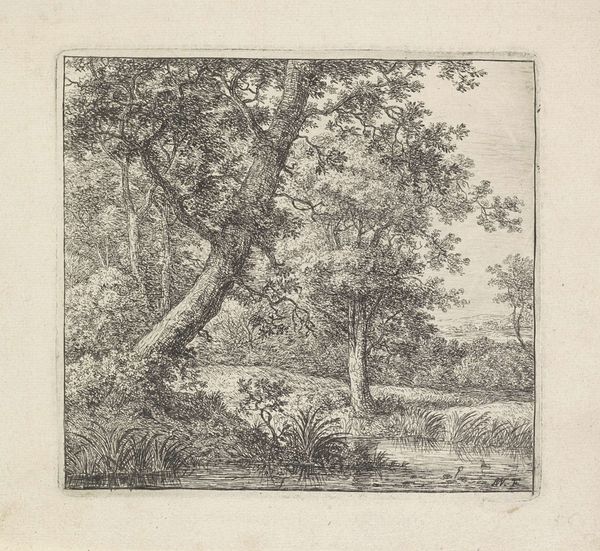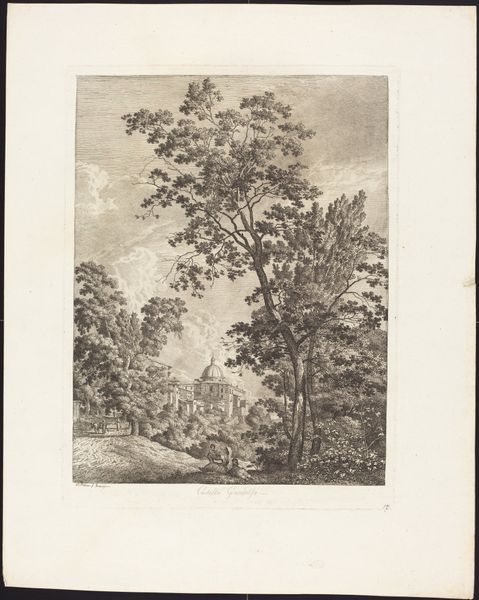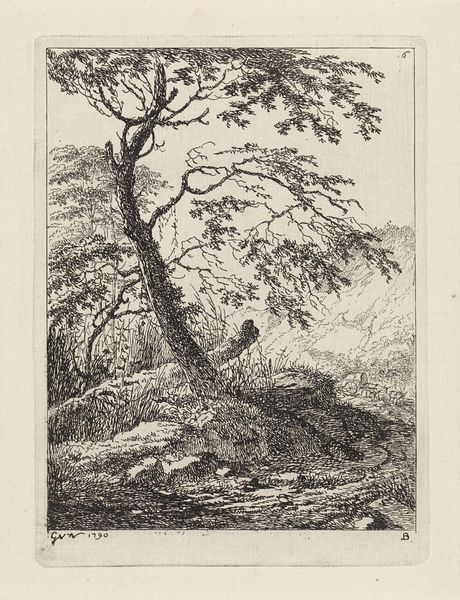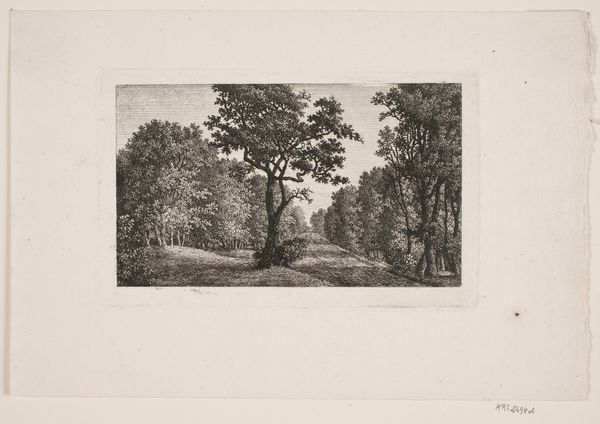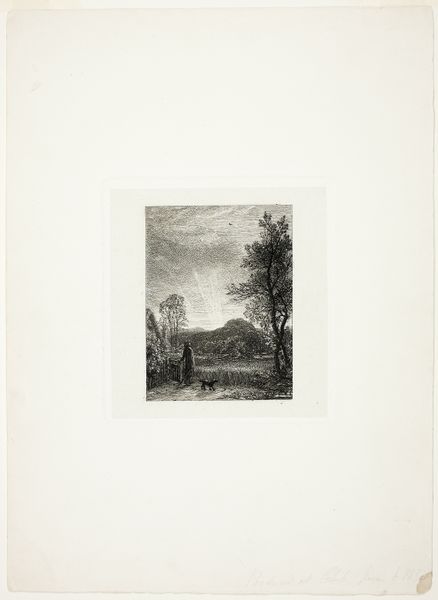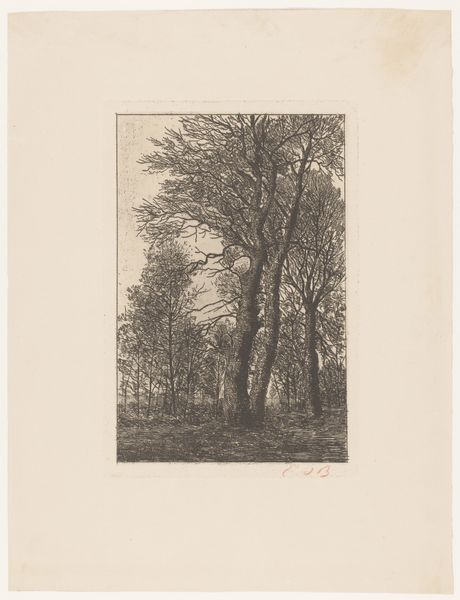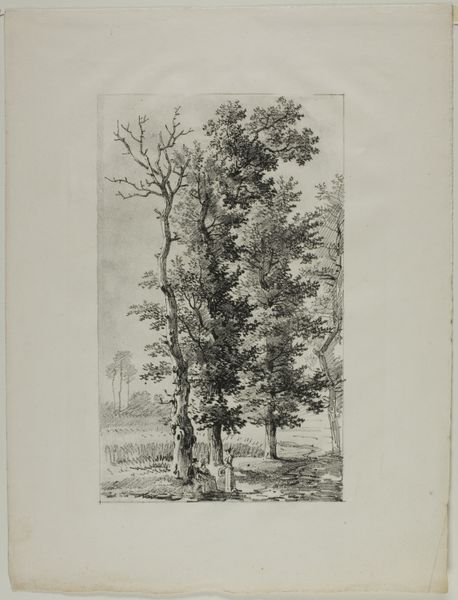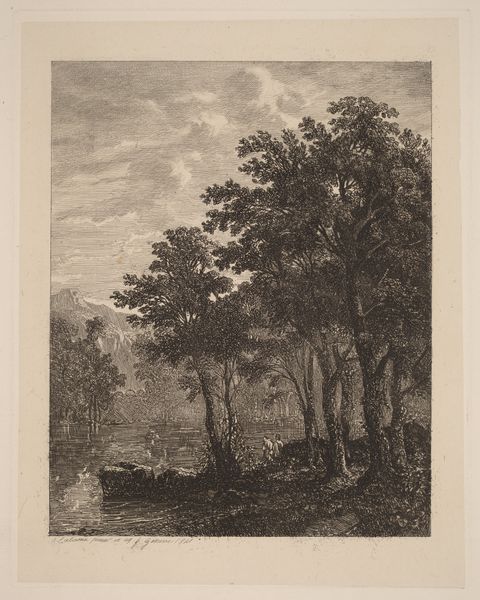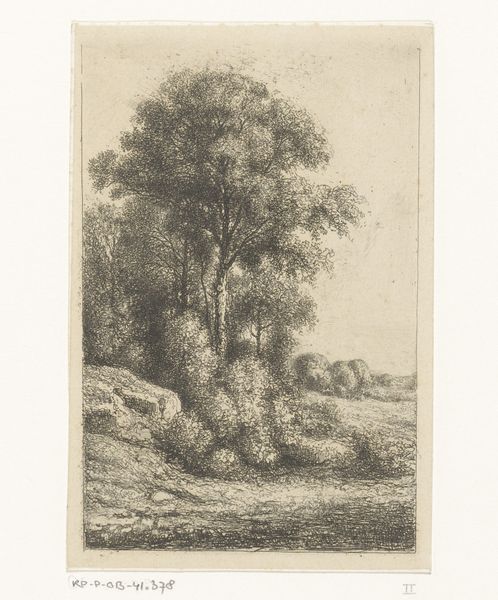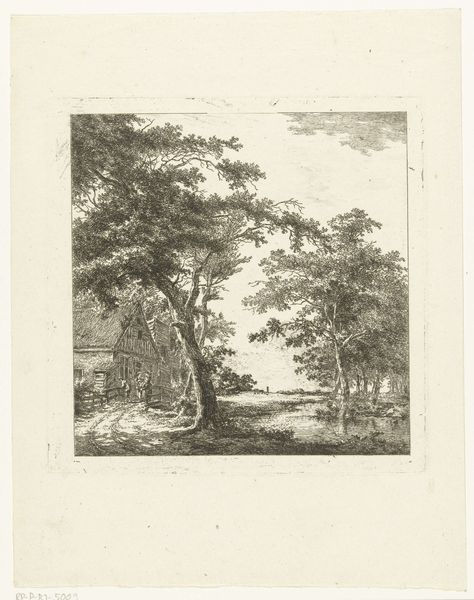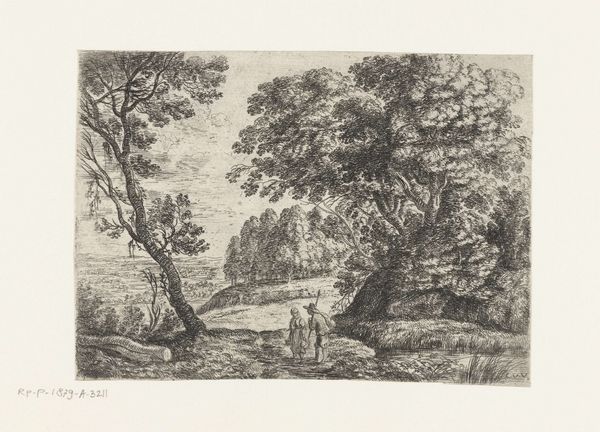
Sheep by a Statue of Pan, plate five from Paysages Dédiés à M. Warelet 1764
0:00
0:00
Dimensions: 208 × 189 mm (plate); 390 × 273 mm (sheet)
Copyright: Public Domain
Salomon Gessner made this etching, ‘Sheep by a Statue of Pan’, in the 18th century, rendering ink on paper. Look closely, and you’ll see it is composed of countless tiny lines, all worked into the surface of a metal plate and then printed. This technique, known as etching, allowed Gessner to achieve subtle tonal variations and intricate detail, especially evident in the rendering of the foliage and the sheep's wool. But beyond the technical mastery, consider the cultural implications of this medium. Printmaking in this period was crucial to the circulation of images and ideas, and the labor-intensive process reflects a pre-industrial mode of production. There's a directness to this image, a sense of connection to the land and labor that feels almost nostalgic now. Think about how different this is from our contemporary modes of image-making and consumption, dominated by digital technologies and mass production. Understanding Gessner's work through its materials and making processes invites us to reflect on the changing relationship between art, labor, and nature.
Comments
No comments
Be the first to comment and join the conversation on the ultimate creative platform.



